“Here’s to the crazy ones, the misfits, the rebels, the troublemakers, the round pegs in the square holes. The ones who see things differently; they’re not fond of rules. You can quote them, disagree with them, glorify or vilify them, but the only thing you can’t do is ignore them because they change things. They push the human race forward, and while some may see them as the crazy ones, we see genius, because the ones who are crazy enough to think that they can change the world, are the ones who do.”
— Steve Jobs
Few decades ago, by evolving and adapting to a collaborative supply chain (like shop-made vs. bought-out or sub-contracting), the Manufacturing Industry transformed itself and created strategically differentiated business models. Pursuant to the Information Technology explosion that made the physical world virtual, such collaborative supply chain found its way in the enterprise and service functions and paved the way for consolidation of the same within or beyond the geographical boundaries of the developed nations - to begin with - where the wage component in the overall cost structure had reached untenable levels.
I.Business Process Transformation is a Universal and Continuing Need
Over the last two or three decades, consolidation of business processes has been primarily associated with large companies, both global and domestic, more often with diversified businesses operating from multiple locations. India came to be the ‘global hub’ for off-shoring for large organizations, whether as global in-house centers (GICs) like American Express or global BPO majors like IBM/ Accenture. In addition, many forward looking Indian MNCs and large corporates have set up their own in-house shared services (say, Hindustan Unilever/ HDFC Bank/ Tata Motors) or outsourced to Indian BPO majors like Intelenet.
Transforming business processes in staff and support functions/ service operations have specifically yielded significant benefits such as cost arbitrage, skill arbitrage, change acceleration, and enhanced compliance and control environment. It has thereby freed up resources in terms of time, capital and energy for the core business requirements, with the view to help the company to compete and grow in this VUCA world. However, more often than not, such models have been seen to deliver results only when enabled by reasonable scale of operations within those functions.
II.Typical Challenges in Business Process Transformation (BPT)
For many not-so-large companies (within India or overseas), there are typical challenges in the sphere of BPT, and this segment of companies have made limited progress or investment in this field, except perhaps investing in ERP and a few basic IT tools.
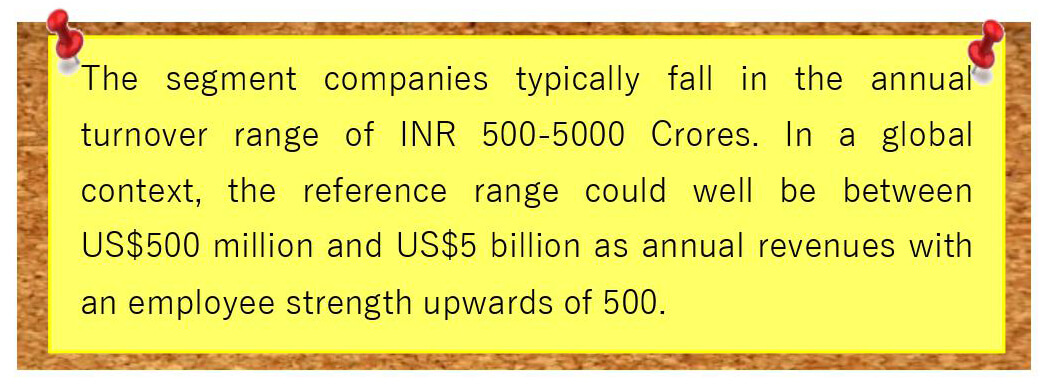
For these companies, the challenges can be classified into four elements as under:
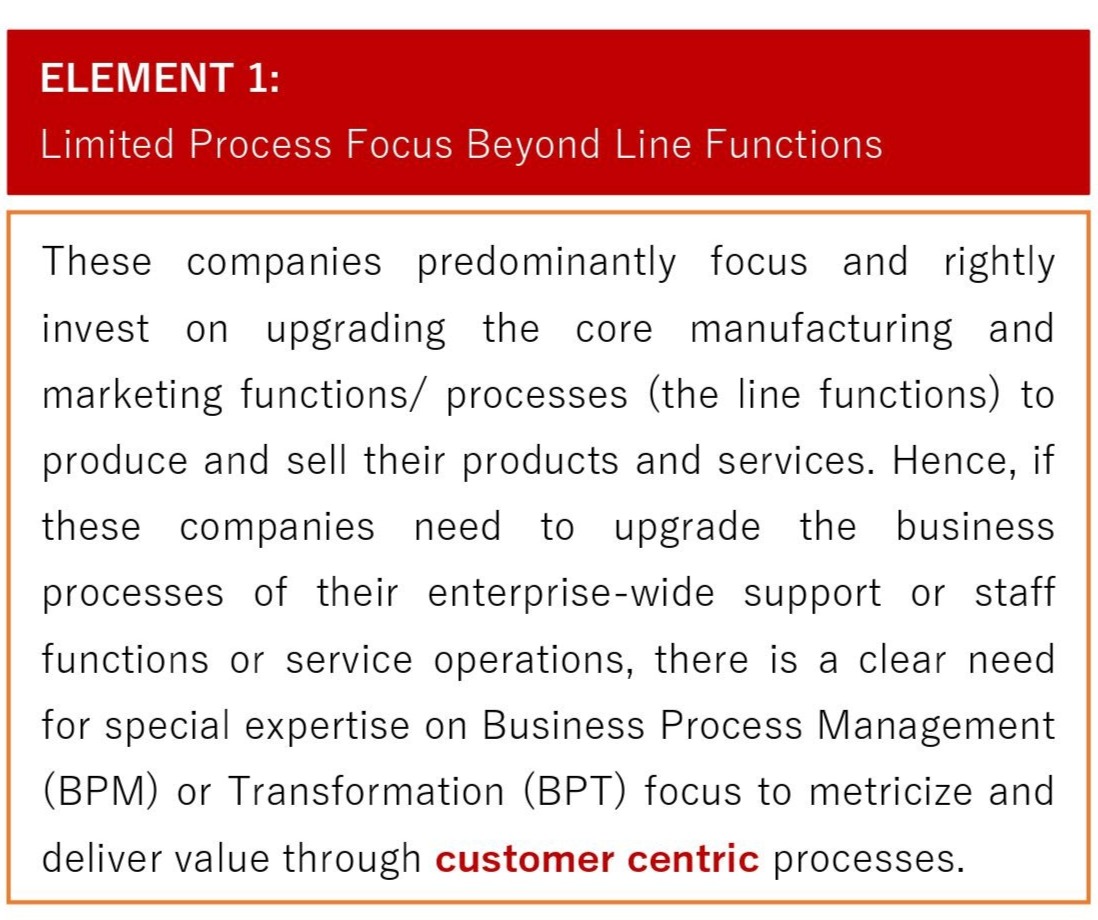
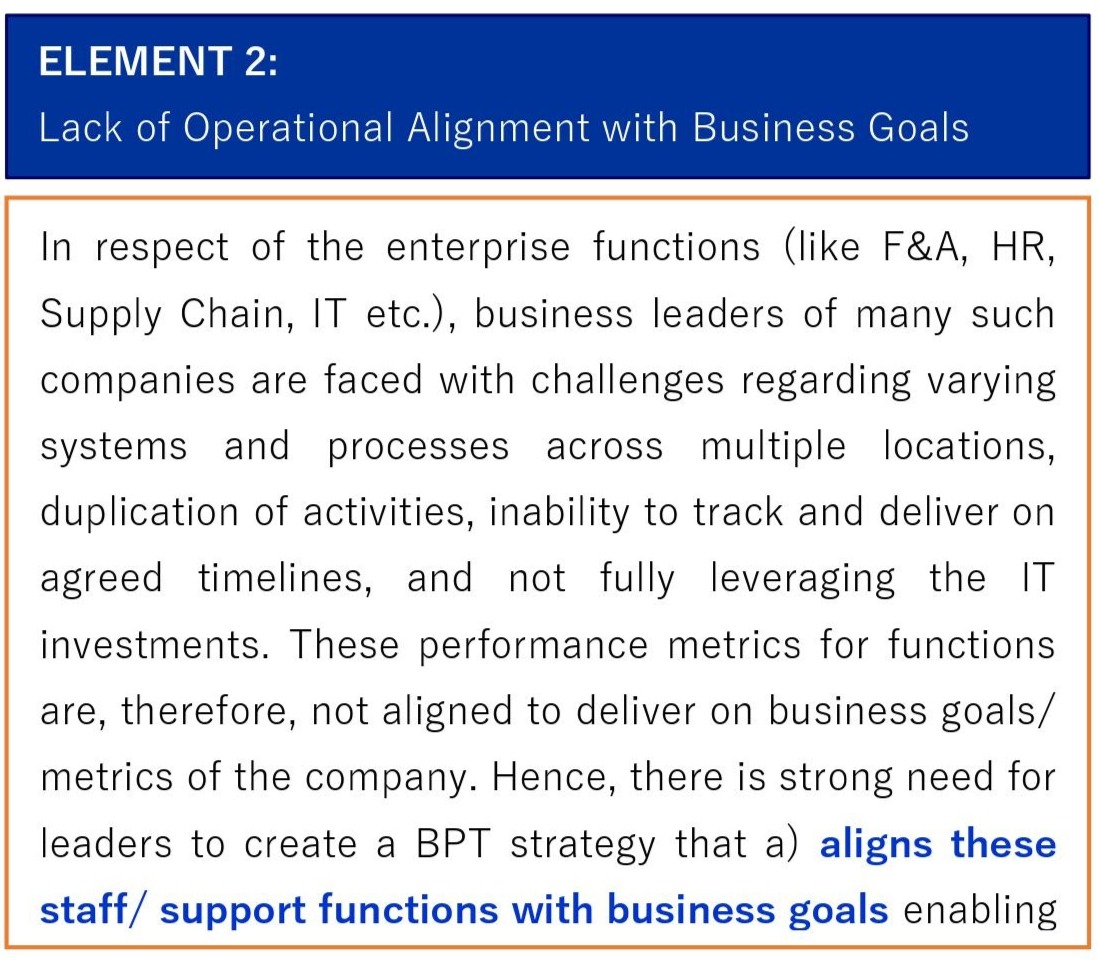
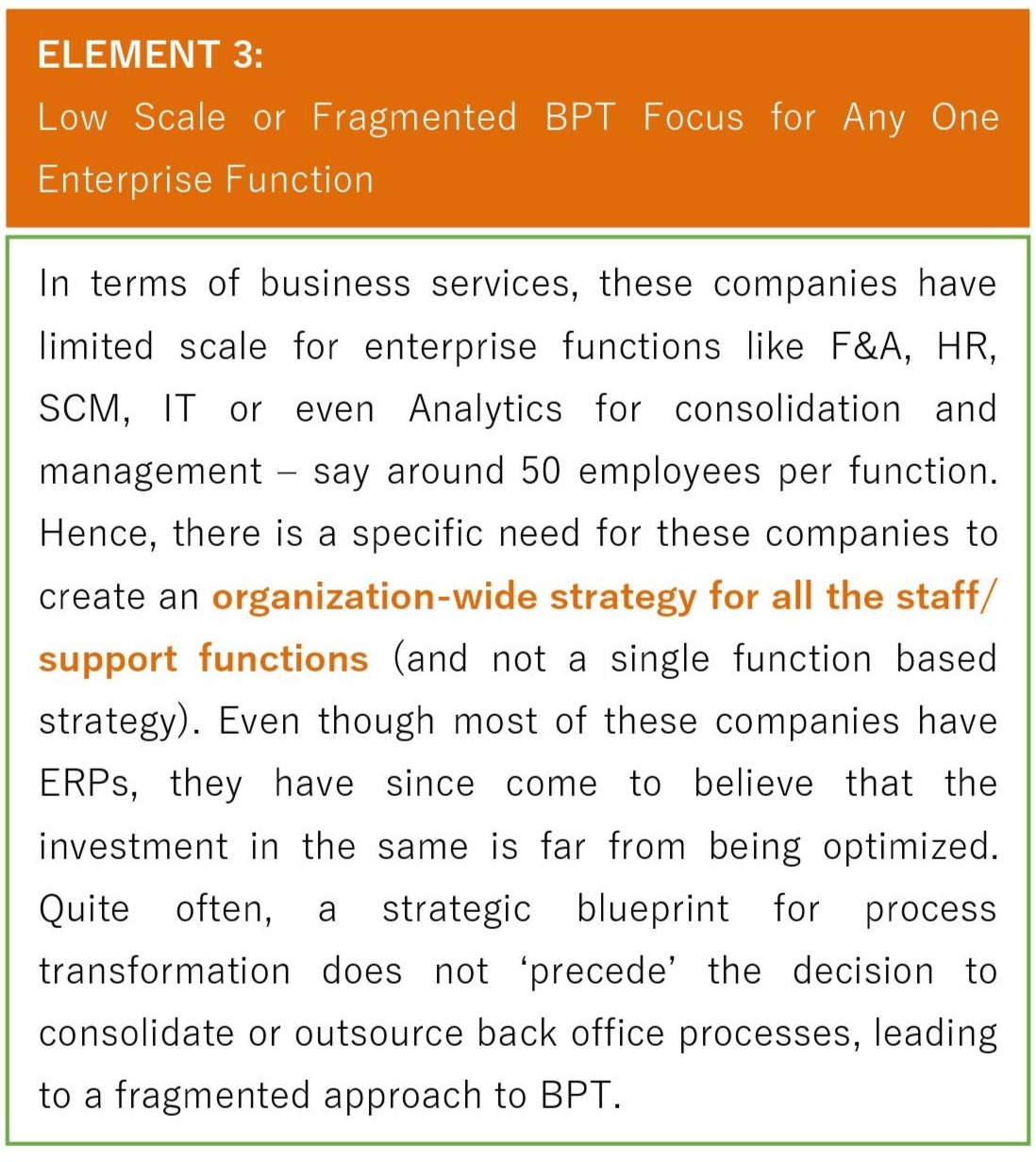
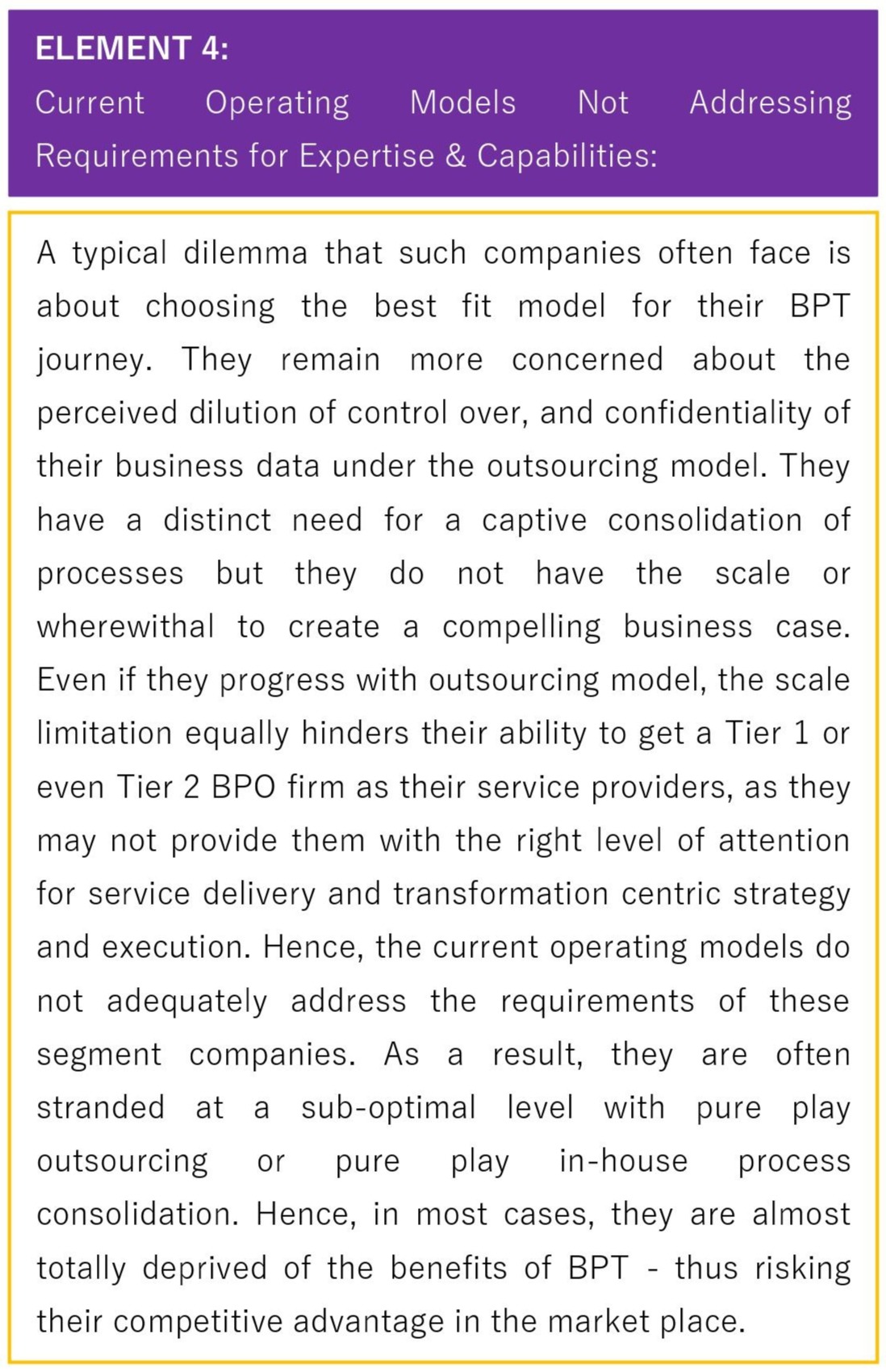
III.Need for a Comprehensive Solution
The limitations as above have given rise to a new and transformative solution namely ‘Dedicated Captive’ (D-Cap) Model. This model addresses all the above challenges and becomes integral to the enterprise level Business Process Transformation strategy. The D-Cap model, enabled by unique capabilities, can thereby service the businesses to gain advantage from both ‘economies of scale’ and ‘economies of knowledge.’
D-Cap is both a transformation capability framework and a delivery model that is best fit for the segment companies during the various stages of maturity for BPT and to sustain continued transformation of processes as extension of the organization.
Two Distinct Components
The combination of a contemporary and cutting edge process capability with service delivery makes it a particularly relevant and value generating choice for such companies. There are two distinct components of the model or the solution: Process Capability as a Service (PCaaS) and Segregated Delivery Unit (SDU) – both provided by a professional D-Cap solutions partner.
‘Dedicated Captive’ (D-Cap) Model addresses all the above challenges and becomes integral to the enterprise level Business Process Transformation strategy.
Process Capability as a Service (PCaaS)
PCaaS, is the spring board that provides transformation centricity to the model. This is a niche BPM capability in today’s business environment with advanced expertise. It may not be an economically viable proposition if invested directly by the company at a relatively lower scale of enterprise functions and processes.
PCaaS is deployed at two levels: a) Design & Execute - the transformational front end, creating the blueprint and roadmap for transformation, and b) Operations & Delivery - the Aggregated Capabilities for back end i.e. enabling the operations and connecting with process design at SDU through an ‘on-demand’ capability framework to deliver service to customers.
At the Design level of PCaaS, BPT expertise is required for strategic leadership to create the transformation road-map. This enables redesign of business processes through the BPM strategy that brings composite focus on the 6 elements of BPM: people, process, technology, customer, business and control, to realize value to the segment company. The strategic blueprint touching all the above 6 elements also helps ‘prioritize’ the BPM implementation in line with client specific requirements like automation opportunities, lean/ six sigma for process improvements,, customer experience management, review of current outsourcing or consolidated in-house operations, etc.
Amongst other things, PCaaS at the Design Level could well include Process Maturity Assessment, Program Management, Change Management, Work Distribution Assessment, RPA & Automation Opportunities, Process & Metrics Review, ERP Utilization, BPM Tools & Systems Enablement, Lean Six Sigma etc. The SDU is only an offshoot of the Design level transformation road map for the enterprise as a whole and the SDU is to be considered as a need ‘only to the extent’ there is a requirement for consolidation of processes before they can be transformed or brought together for effective management of operations.
PCaaS at the Delivery level, is the deployment of ‘Aggregated Capabilities’ such as setting up of the Operating Unit, Process Documentation, the Operations and Process Improvements at the SDU, Quality & Process Innovation, Work Flow, DMS, RPA & Tech Tools Deployment, Compliance & Control Review, Knowledge Management, People & Leadership Development etc. This will ensure alignment of back-end with front-end processes for overall improvement, and benefit of the business outcomes.
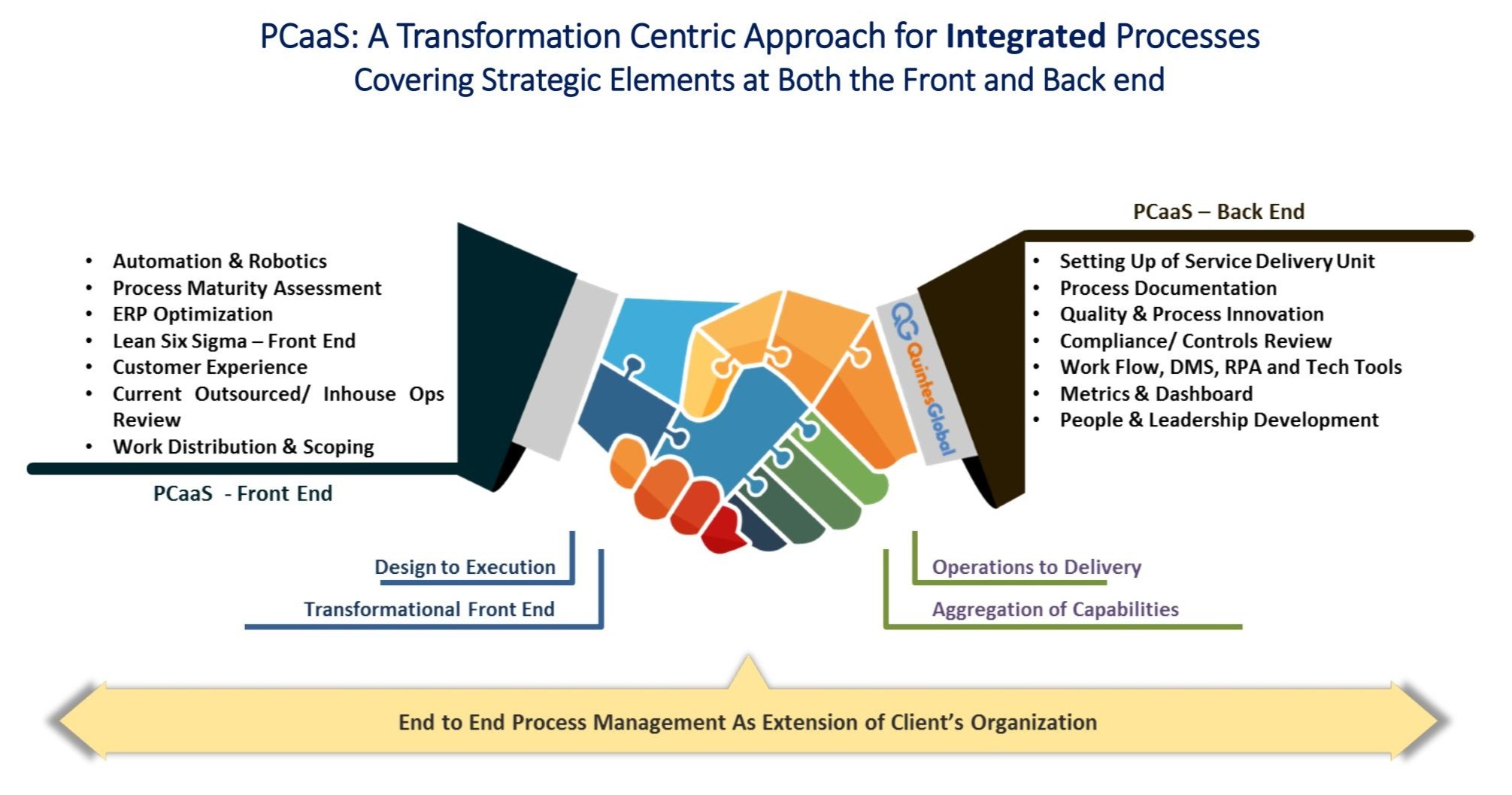
Segregated Delivery Unit (SDU)
SDU is a segregated service delivery unit set up exclusively for operations consolidated in a segregated manner for the client company (by the D-Cap solution partner) identifying closely with its business, brand and culture. As shared earlier, the decision to consolidate is an offshoot of the Transformation Road Map of the PCaaS Design level and is done only to the extent the need is assessed and justified as part of transformation. The operations of the SDU are managed by the D-Cap partner. It is an extension of the clients’ own businesses or offices – and the employees are seen as exclusively identified for the client. This SDU is typically carved out as a distinct section in the operating facility, and often could be an independent legal entity, where the client has the right of access and can interact with the employees.
The SDU under D-Cap, hence combines the best of in-house as well as outsourced models. The chart below depicts the specifics of this unique model.
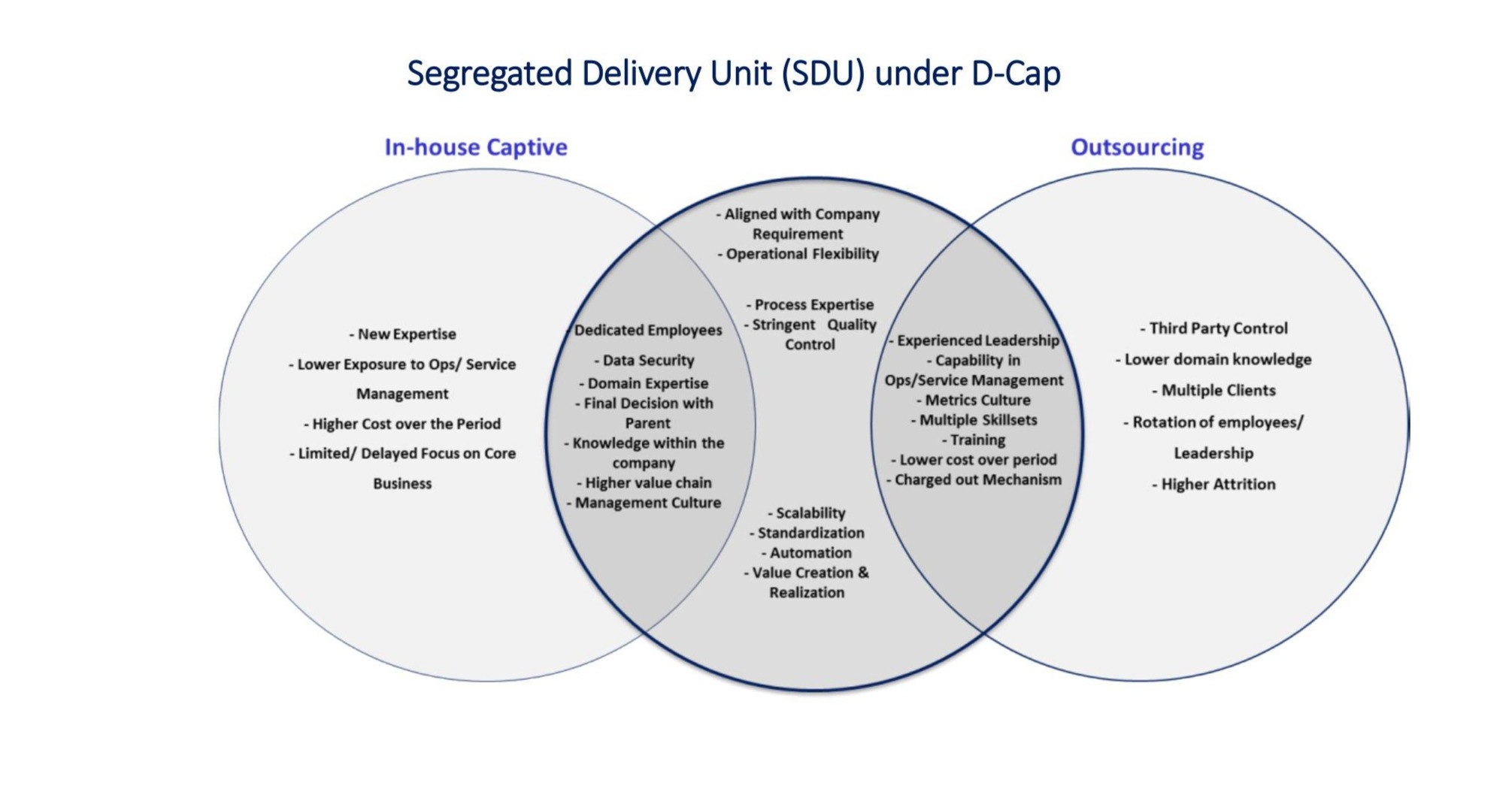
The above combination of PCaaS Design at the front end as a spring board and a separate SDU as per client’s need, supported by PCaaS Delivery at the back end from a common pool of talent from the D-Cap partner, enables the client company to derive the much needed expertise for achieving end-to-end transformation centricity in business processes. At the same time, it avoids under-utilization of specialist resources (like Transformation, Transition or Process Reengineering) and betters the leveraging of specific requirements (like bolt on tools, Robotics, systems optimization etc.) - thereby reducing the overall cost of operations and ensuring sustained benefits.
By adopting this innovative solution in totality, the client company is assured of segregated service delivery like a captive unit with redesigned and often automated processes in the front as well as back end, along with the expertise required to initiate, manage and sustain BPT on an ongoing basis. This model, therefore, continually transforms the processes optimally in tune with the business needs without any risk of losing or diluting the considerations of confidentiality, control and continuity.
Ownership Structuring of SDU under the D-Cap Model:
The uniqueness of this model making it innovative extends further to the aspects of structuring the SDU in a manner to enable value generation and realization.
a )Holding: The model gives flexibility to the client to structure the ownership of the SDU as per their requirements and comforts. The options could be
- 100% ownership as a division of the client,
- a separate legal entity having mix of ownership (say 26% to 74%) between the client company and the D-Cap partner, or
- 100% owned by the D-Cap partner (especially for overseas clients to eliminate or avoid transfer pricing issues, as part of ‘related party’ transaction).
The above ownership structuring can simply be described as Client Owned Partner Operated (COPO) or Partner Owned Partner Operated (POPO).
b )BOT Option: The client has the option to retain a BOT (Build Operate & Transfer) clause under the model whereby the SDU is operated for a certain period of time (say 3 to 7 years) by the D-Cap partner, and thereafter transferred to the client. The SDU is initially created as a separate operating unit and is managed with professional expertise of the D-Cap partner for the day-to-day management as well as to implement specialist practices. The process of transferring ownership of the center remains relatively simple with the D-Cap partner exiting the contract as per terms for transfer either on natural termination, or earlier as required. The D-Cap model, by design, gives the option to the client to continue/ extend the arrangement with the D-Cap partner for the SDU or decide to transfer SDU to a third party to realize value through a spin off (instead of outsourcing upfront).
This model continually transforms the processes optimally in tune with the business needs without any risk of losing or at least diluting the considerations of confidentiality, controls and continuity.
c ) Resourcing: Similarly, the D-Cap model permits staffing of the SDU with a combination of resources with existing resources of the client company transferred to the SDU (particularly for an onsite consolidation), supported by resources from D-Cap partner and/or external staffing agencies. This way, the client company is enabled to deal with immediate absorption of leaders for operations and also have the flexibility to release resources in line with the anticipated productivity improvements or reengineering.
The D-Cap model fills a clear void of a specific process transformation model that provides the unique opportunity for the segment companies to transform/ redesign business processes and derive benefits from BPM, retaining independence and freedom through captive operations while ensuring interdependence and economies through a pool of capabilities that can sustain process improvements and operational innovation.
IV.Operationalizing the D-Cap Model
The D-Cap model underpins ‘transformation centricity’ to processes and operations, right from the word ‘go’, requiring integrated execution of PCaaS and the SDU to effectively operationalize it.
PCaaS – the spring board: Transformation starts with PCaaS through a ‘SEE’ framework – Shape, Execute, Excel. Shape focuses on two aspects: Levers and Outcomes. Transformation Strategic Blue
Print & Road Map, prioritization of transformation elements covering 3x3 matrix of process, technology, people are the Levers. Customer, business and control are the Outcomes.
The Shape stage is the most holistic review for end-to-end transformation including review of current state of consolidation and/ or outsourcing. It is completed in a span of 4 to 8 weeks depending on the scale, size, functions of the client company and the number of locations. The primary action first focuses on client’s prioritization for technology enhancements and solutions, process redesign at the front end, re-staffing and reskilling requirements of people and their development. The blue print review also examines actions towards consolidation and/ or outsourcing of processes including restructuring of the current state. The Shape study clearly captures the change management and program management requirements, based on business, brand, values and culture. Finally, the Execution Roadmap with a phased execution plan and the resultant business case is prepared to enable approval of the transformation journey.
The ‘Execute’ stage opens up with two streams – front end linked transformational solutions such as on-site automation, restructuring etc., and back end process transformation solutions such as consolidation, spin off, process redesign post consolidation etc. Both are prioritized for speed of execution and value generation. The execution plan for each action is then detailed for each prioritized action. Program management that combines project management and change management is the key for a great plan to be a successful one.
Post the execution, the Excel stage takes over to stabilize the executed actions, progress change management requirements to logical completion, deepen process excellence areas and a business case refresh to validate and ensure value delivery plan/requirements.
The SDU offshoot: The Execution roadmap for SDU follows a ‘Scope, Set-up, Operate and Excel’ (SSOE) methodology. The partner builds on the transformation road map to scope the process landscape, assess the potential for process and headcount consolidation, creates an implementation road map based on client priorities to set up the SDU, and works out the business case for the actions planned. At this stage, the SDU structuring options are also evaluated and finalized.
Setting up and transitioning to the SDU with the identified processes is the next stage of Execution. Enabled by PCaaS, the emphasis is not on just consolidating the processes as they exist but also to assess and clean them up before transition, by appropriate usage of process and technological expertise, or streamline post consolidation. The client company and the D-Cap partner are part of the governance to drive the specific goals and deliverables of the SDU to client/ internal customers.
The D-Cap partner provides the necessary infrastructure, people and leadership to document the processes and run the operations efficiently leveraging PCaaS (Operations to Delivery) through ‘Aggregation of Capabilities’ to implement BPM tools and systems, metrics, review frameworks etc. The resources for PCaaS are deployed on need basis by the D-Cap partner.
Besides a new SDU set up, the D-Cap model can become operational even with SDU as the initiating point when an existing low scale in-house centre already set up is taken over or a current outsourced operation is brought in as an SDU by the D-Cap partner. Both these options become viable routes for initiating the D-Cap model in view of the immense benefits of PCaaS, the various advantages of operating SDU under this model, and end-to-end transformational focus including automation.
The D-Cap partner is committed to achieve the agreed goals on Process Transformation by applying robotics and other technology tools, Black Belt (LEAN/ Six Sigma/ eSCM) projects, migration of upstream/ down-stream processes, and other business enablement services.

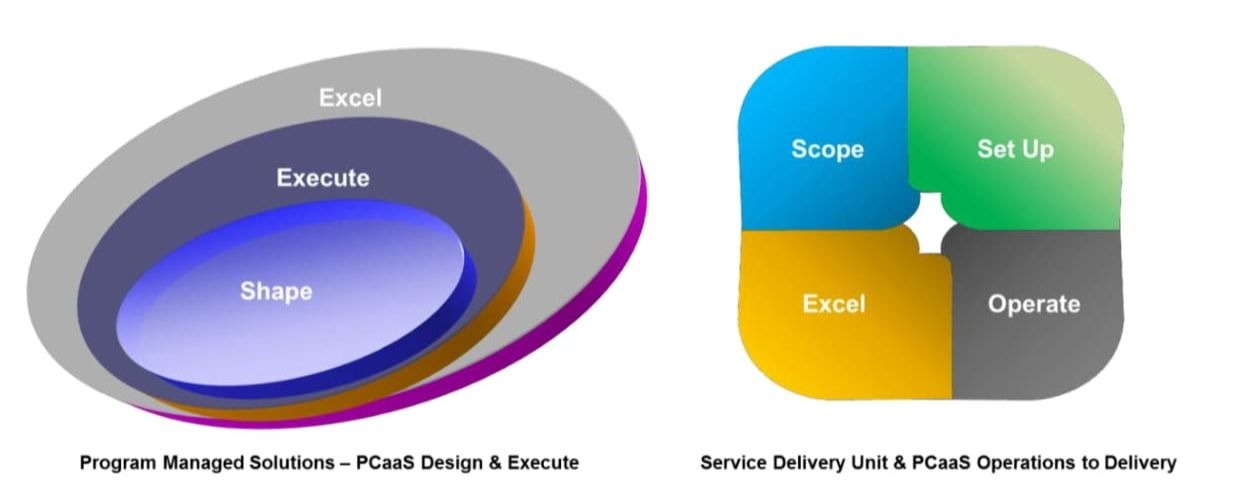
Intrinsic to the aforementioned execution methodology is the Business Partnership Approach to be practiced by both the client company, led by the CXO/ leader concerned and the D-Cap partner, as no transformation strategy or solution, howsoever unique or innovative can succeed without active and effective engagement of the people implementing the same. Thus, leadership of both the client company and the D-Cap partner must remain focused on the customer, business and value with clearly understood roles for each of them.
V.Unique and Innovative
D-Cap is a unique transformation centric business model that
- enables transformation of enterprise-wide processes
- by leveraging process capabilities and
- synergizing the benefits of both in-house and outsourcing models,
- while maintaining the required level of data confidentiality and control,
- that are particularly suited and practicable for mid to large corporations.
At the same time the model is innovative to
- provide a segment specific focus to mid-to-large companies
- using its transformational centricity, combining front-end and back-end improvements, and
- Aggregation of Capabilities and Segregation of Operations leading to best of the two worlds - pure play captive and pure play BPO,
- along with a uniquely flexible ownership structure, and by
- becoming an extension of the organization - to move beyond dedicated 'captive' to dedicated 'capability' unit
VI.Strategic Benefits and Business Case
This innovative solution as the cornerstone of the overall Business Process Transformation Strategy leverages the two components - Process Capability as a Service (PCaaS) and Segregation of Operations (SDU), together delivering substantial strategic benefits as under:
- Value of PCaaS: The model brings dedicated BPM expertise with an end-to-end transformational solution that amazingly combines strategy, execution and process excellence through PCaaS. It is not limited to merely providing advisory capabilities for transformation or acquisition of a totally new set of skills and capabilities for managing an in-house model. It also helps to avoid the limitations of outsourcing, where the attention to a low scale client is a challenge and enables becoming extension of the client organization for Business Services.
- On Demand: The Aggregation of Capabilities for SDU and availing of services ‘on-demand’ by the client on ‘usage basis’ (under PCaaS) from the D-Cap partner brings the power of BPM expertise to drive process efficiency and effectiveness, while avoiding under-utilization of high cost specialist expertise and resources focused on BPM, being part of SDU on a full time basis.
- Customer Experience: The combination of PCaaS and SDU with transformation focus brings holistic customer centricity, enhancing the overall experience of internal and external customers.
- Consolidation: The Segregation of Operations becomes more an ‘off shoot’ of a structured Transformation Roadmap, eliminating the fragmented approach to back-office consolidation or outsourcing. When consolidation is considered, the SDU approach not only leads to benefits due to similar functions/processes brought under one umbrella that are currently distributed across multiple locations but also ensures ‘no loss of control’ and ‘hassle-free’ remote operations (India or overseas) as the operations are managed by a BPM practitioner of the D-Cap partner. SDU also realigns resources in terms of right level, right skill, right level and redeployment, with opportunity for process improvements post consolidation.
- Beyond Captive to Capability: The SDU which is initiated as captive in-house operations grows in maturity over a period of time. This provides a great spin-up effect to make the D-Cap move beyond a ‘Dedicated Captive’ to become ‘Dedicated Capability’ model when the SDU demonstrates enterprise-wide partnership to co-create value.
The above strategic benefits translate into a business case as under:
- End-to-End Process Improvements: With a well-orchestrated business transformation effort combining accountabilities to design, execute, operate and deliver, the model supports customers of the segment companies with front-end benefits through end-to-end process assessment, reengineering, redesign and automation and treats consolidation or outsourcing, not as the first step, but only as the most essential step towards process transformation.
- RoI: Despite a smaller scale of operation under SDU, the model supports clients with a business case of ~25% IRR minimum, payback of 2-3 years and 5 to 10% YoY improvement opportunities.
- ‘Economies of scale’ for investments and operations that enable the client to reduce investment substantially to get the financial benefits through SDU, use of PCaaS and ownership structuring.
- ‘Economies of Knowledge’ that brings valuable all round BPT expertise in all aspects of transformation at the right time, driving unbiased client focused value to be derived from holistic end-to-end focus, far outweighs the cost incurred through the D-Cap model.
- Value Creation: An opportunity to monetize the SDU through spin-off at the right time.
Benefits Galore
The Industry Agnostic and Innovative D-Cap Solution Delivers on Both Financial and Strategic Fronts
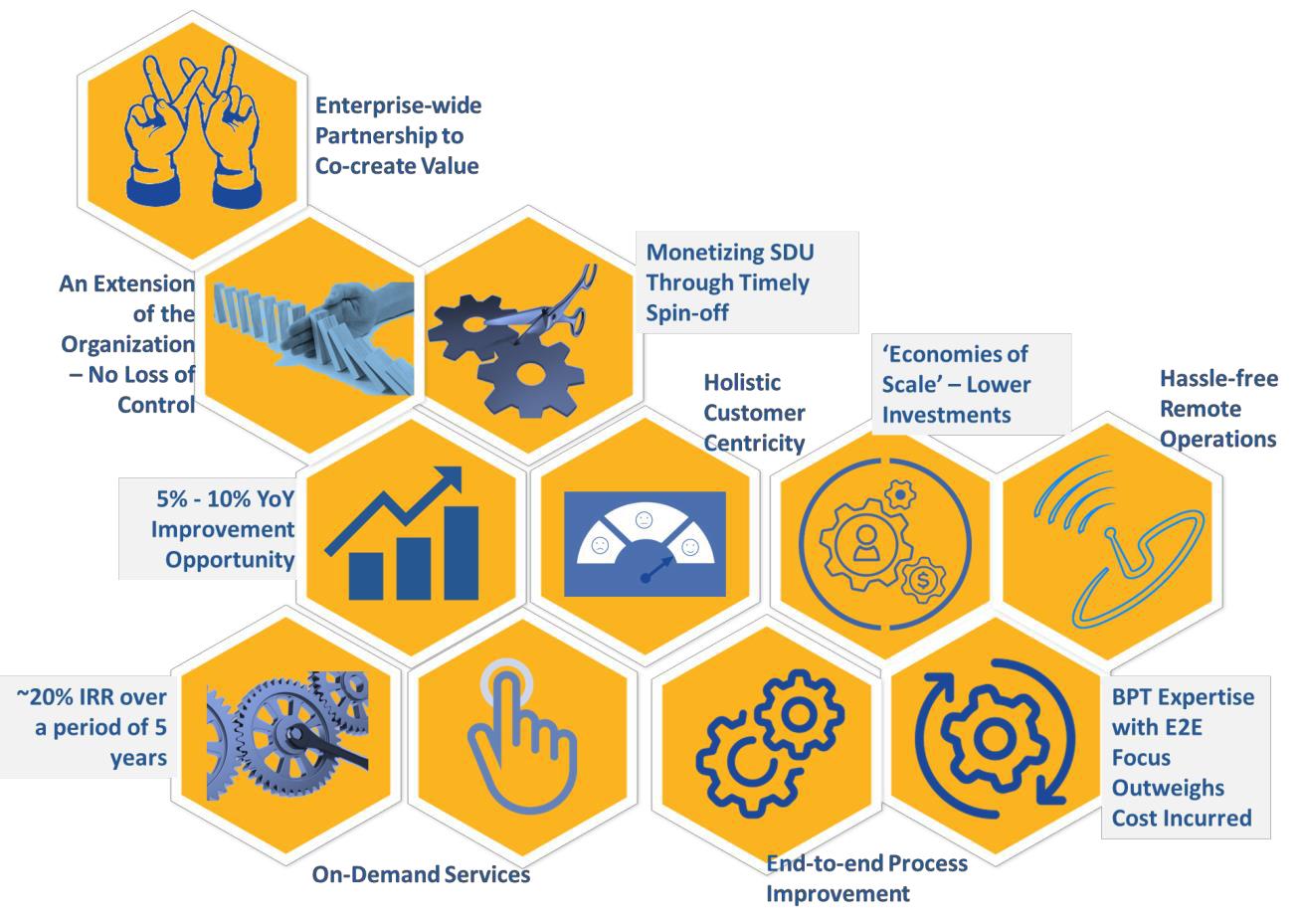
In Summary
In the ever evolving world of business, the need for transforming the underlying processes on regular basis continues to grow and demands intervention backed by the right expertise, supported by an end-to-end accountability to strategize, design, execute, achieve, operate and excel. For many organizations, creating or developing such expert capabilities may not be a viable option on their own but foregoing the benefits of such potential transformation is not an option either.
The innovative solution of Dedicated Captive Model, unique combination of PCaaS and SDU operations, seeks to address all the challenges and requirements for such segment companies. Care should be taken to choose the right D-Cap partner who can bring the right level of leadership expertise, hands-on program management and execution experience to adopt the model, with the appropriate structuring model for the sustainable success of the transformation strategy. The best value is achieved when the D-Cap partner becomes an extension of the client’s organization for business services transformation and operations.
ABOUT THE AUTHOR

Anand Maheshwari is a meritorious Chartered Accountant with over 3 decades of extensive work experience with a blend of senior leadership and entrepreneurial roles, within India and UK. He is the Founder Director of Quintes Global, a new start up, promoted by Ramakrishnan & RvaluE Consulting to offer certain innovative solutions and capabilities in the arena of BPM to a niche segment – both in India as well as globally. His experience includes controllership/ CFO responsibilities, business and finance leadership across a variety of domains of Offshoring & Domestic Business Services, Financial Services, Oil, Petrochemicals and Chemicals, IT and related services.
In his current role with the RvaluE Group, Anand brings proven entrepreneurial experience, strategic execution capabilities, stakeholder collaboration and people management skills and focus on coaching and mentoring of other leaders.



 Ask an Expert
Ask an Expert



